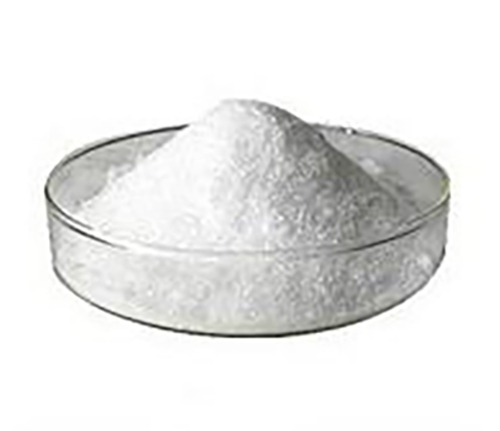Important applications of mannitol
Introduction
Mannitol, with the chemical formula C6H14O6, is a sugar alcohol and an isomer of sorbitol. Soluble in water, it is a white crystalline powder with a sweet taste similar to sucrose[1].

Picture 1 Mannitol powders
Preparation method
There are two main processes for industrial production of mannitol in the world. One is to take kelp as raw material. While producing alginate, the soaking solution of kelp after iodine extraction is obtained through multiple concentration, impurity removal, separation, evaporation concentration, cooling and crystallization; One is obtained from sucrose and glucose by hydrolysis, differential isomerization and enzyme isomerization, and then hydrogenation. China has used kelp to extract mannitol for decades. This process is simple and easy, but its development has been restricted for a long time due to the limitations of raw material resources, extraction yield, climatic conditions and energy consumption. The annual output of mannitol in China in the last century has never exceeded 8000 tons. The synthetic process in China began to be tested in the 1980s and came out in the 1990s. However, it has made great progress because it is not limited by raw materials and suitable for large-scale production.
Medical application
Mannitol is a good diuretic in medicine. It can reduce intracranial pressure, intraocular pressure, kidney medicine, dehydrating medicine, sugar substitute, excipient of tablets and diluent of solid and liquid. As a hypertonic antihypertensive drug, Injectio mannitou injection is commonly used in clinical rescue, especially in the rescue of brain diseases. It has the characteristics of fast antihypertensive and accurate curative effect required by drugs to reduce intracranial pressure. After mannitol enters the body, it can increase the plasma osmotic pressure, dehydrate the tissue, and reduce the intracranial pressure and intraocular pressure. After glomerular filtration, it is not easy to be reabsorbed by renal tubules, increase the urinary osmotic pressure, bring out a large amount of water and dehydrate. It is used for edema caused by craniocerebral trauma, brain tumor and brain tissue hypoxia, edema caused by large-area burn, ascites and glaucoma caused by renal failure. It can prevent and treat early acute renal insufficiency.
As an excipient for tablets, mannitol has no hygroscopicity, fast drying, good chemical stability, and has the characteristics of refreshing and good granulation. It is used in most tablets such as anticancer drugs, antibiotics, antihistamines and vitamins. In addition, it is also used for chewing tablets such as sobering drugs and oral coolants. Although mannitol can be absorbed by human gastrointestinal tract, it does not accumulate in the body. After being absorbed, one part is metabolized in the body and the other part is excreted from the urine; Mannitol is more widely used in the manufacture of chewing tablets such as sobering drugs and oral coolants because it absorbs heat when dissolved, has sweet taste and is comfortable for the mouth. Its granular type is specially used as excipient for direct tablet pressing.
Application of mannitol in food field
In terms of food, the product has the smallest water absorption in sugar and sugar alcohol, and has a refreshing sweet taste. It is used for anti sticking of maltose, chewing gum, New Year cakes and other foods, as well as anti sticking powder of general cakes. Dibromo mannitol can be prepared by hydrobromic acid reaction. It can also be used as delicacy and low sugar sweetener for diabetics, such as food, body building food, etc.
Application of mannitol in industrial production
Polymannitol propylene oxide, which is made from mannitol as the starting agent, is widely used in the plastics industry. The rigid polyurethane foam based on polymannitol propylene oxide has good oil resistance, thermal oxidation resistance and dimensional stability, and its heat resistance is as high as 180 degrees Celsius. It can be widely used as emulsifier for the esterification of stearic acid and mannitol in the industries of confectionery and confectionery, and can also be used as emulsifier for the dispersion of stearic acid, mannitol and other fine chemicals. In addition, mannitol is also used to make rosin ester, artificial glycerin resin, explosive and detonator (nitrated mannitol), plasticizer of polyvinyl chloride in plastic industry, moisturizer in cosmetics, etc. It is used for the determination of boron in chemical analysis and bacterial culture agent in biological detection. Mannitol (about 7%) is often used to prevent the thickening of the acid making agent aluminum hydroxide suspension. It is also suggested to use it as a plasticizer for soft capsules. Granular mannitol has good fluidity. Adding it to other substances that are not easy to flow can improve its fluidity, but the addition amount shall not exceed the concentration of other substances by 25% (weight).
Reference
1 Nissenson A R, Weston R E, Kleeman C R. Mannitol[J]. Western Journal of Medicine, 1979, 131(4): 277.
Related articles And Qustion
Lastest Price from Mannitol manufacturers

US $10.00-5.00/KG2025-06-27
- CAS:
- 87-78-5
- Min. Order:
- 1KG
- Purity:
- 99%
- Supply Ability:
- 100000kg

US $0.00/KG2025-04-21
- CAS:
- 87-78-5
- Min. Order:
- 1KG
- Purity:
- 98%min
- Supply Ability:
- 30tons/month





